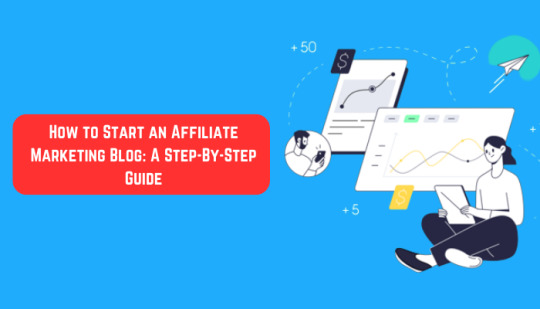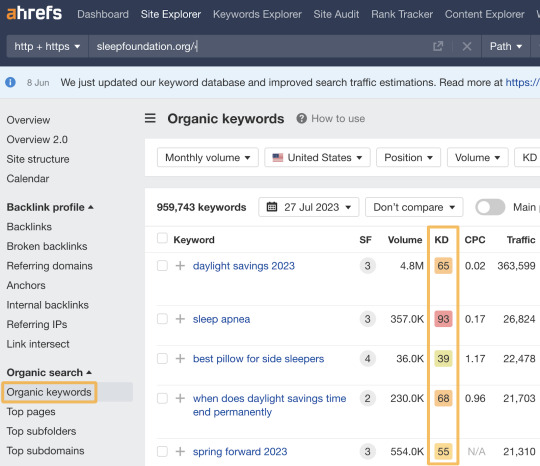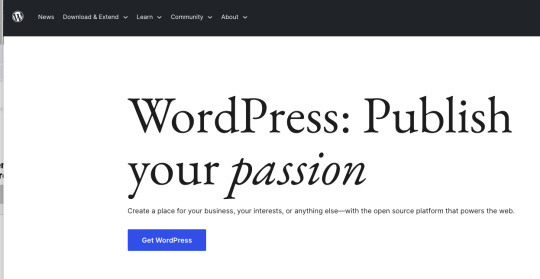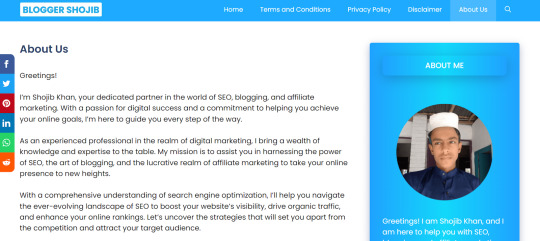#google web stories wordpress plugin
Text
₹8 लाख महीने Web Stories से कैसे कमाते हैं? | How to Earn $300 Per Day From Google Web Stories?
सबसे पहले हम पहले वह एनालिटिक्स दिखाइए अभी क्या चल रहा है रियल टाइम क्या चल रहा है हमें य भी देखना है ना कि ज्यादा ट्रैफिक में बन रहा है कि कमी ट्रैफिक में बन र य भी तो चीज देखनी जरूरी है अच्छा आपका सबसे ज्यादा ट्रैफिक है यूएस से है इस डोमेन के ऊपर 1000 इस डोमेन के तो बढ़िया सर यह तो हमारा एक अकाउंट हो गया अब हमें और भी 000 डलर और दिखाने हैं सारी तिजोरिया में आप सन बारी कर पड़ नमस्ते दोस्तों…
View On WordPress
#earn $1000 per day from google news#free ways to earn money from google#google web stories#google web stories earning#google web stories in hindi#google web stories kaise banaye#google web stories traffic#google web stories tutorial#google web stories wordpress#google web stories wordpress plugin#how to create google web stories#how to make money online#how to use google web stories#how to use google web stories wordpress plugin#web stories
0 notes
Text
Start A Profitable STORY Marketing Agency For Local Businesses In 2023…
Brand New App Creates Fast-Loading, Mobile-Focused, & Visually Rich Web Stories For Your Website To Get You MORE Traffic, Sales & Profits
In 2023… Every Business Is Going To Need Web Stories…

//Features\\
Beginner Friendly. Zero
Learning Curve
BONUS: Commercial License Included. Sell Web Stories For $97-$497
Instant Web Stories: AI-Powered Software Creates Immersive
Web Stories In SECONDS
Engage Visitors: Use Images, Videos, Animations & Music & Interactive Quizzes To Keep Your Audience Hooked
Increase Sales: Easily Add CTAs & Links To Sell Your Products From Right Inside Your Web Stories
FREE Traffic: Appear In Google Search & Discover Results As Big, Eye-Catching Images
More Conversions: Use Web Stories As Interactive & Engaging Mobile Landing Pages
Capture New Audience: Put
Your Business In Front Of New Audience From US, Brazil & India
Fully Cloud-Based. Nothing To Download Or Install.

Start The World’s FIRST Story Marketing Agency
#how to create google web stories#web stories#google web stories#web story#create google web stories#google web stories tutorial#how to use google web stories#google web stories wordpress plugin#google web stories wordpress#web stories for wordpress#google web stories in hindi#web stories kya hai#google web stories traffic#auto create web story#google web stories plugin#web story plugin#web stories tutorial#google web stories plugin for wordpress
1 note
·
View note
Text
Web Stories Builder WordPress Plugin Offers Unlimited Stories Creation, Revolutionizing SEO and Google Discover Traffic
http://dlvr.it/TDRcjS
0 notes
Text
Web Stories Builder WordPress Plugin Offers Unlimited Stories Creation, Revolutionizing SEO and Google Discover Traffic
http://dlvr.it/TDRcQj
0 notes
Text
Web Stories Builder WordPress Plugin Offers Unlimited Stories Creation, Revolutionizing SEO and Google Discover Traffic
http://dlvr.it/TDRcGw
0 notes
Text
Plugin Fast Web Stories
Plugin Fast Web Stories: A Melhor Solução para Criar Web Stories no WordPress. Você está procurando uma forma de impulsionar o tráfego orgânico do seu site?
O Plugin Fast Web Stories pode ser a ferramenta ideal para você. Com este plugin, é possível criar web stories de forma rápida e eficaz, garantindo que seu site entre no Google Discover com facilidade, resultando em um aumento significativo…
0 notes
Text
How to Start a Successful Blog: A Step-by-Step Guide for Beginners

Starting a blog can seem daunting, but with the right guidance, it becomes an exciting venture that can lead to significant personal and financial rewards. This guide will walk you through the process of creating your blog, from choosing a platform to optimizing it for SEO and monetization.
1. Choosing the Right Blogging Platform
WordPress: The Best Choice for Beginners
WordPress is the most popular platform for bloggers and for good reasons. It’s user-friendly, versatile, and doesn't require any coding skills. There are two versions: WordPress.com and WordPress.org.
- WordPress.com: This version is ideal for beginners who want to focus solely on content creation without worrying about hosting or maintenance. It’s straightforward but offers limited customization unless you opt for premium plans.
- WordPress.org: This is a self-hosted option that provides full control over your site. It requires a hosting account and a domain name but offers extensive customization options and plugins.
Why Choose WordPress Over Other Web Builders?
- Ease of Use: WordPress’s drag-and-drop interface makes it easy for anyone to build a website without coding.
- Free to Use: Unlike many other platforms, WordPress is free, though you’ll need to pay for hosting and a domain name.
- Customization: Thousands of themes and plugins are available, allowing you to create a unique website.
- SEO Friendly: WordPress is built with SEO in mind, helping you rank higher in search engine results.
2. Getting Started with WordPress
Domain Name and Hosting
- Choosing a Domain Name: Your domain name is your website’s address. It should be short, memorable, and relevant to your content. Avoid using numbers and special characters.
- Registering Your Domain: You can register your domain name through platforms like GoDaddy, BigRock, or Google Domains.
- Selecting a Hosting Provider: Bluehost is highly recommended for beginners due to its affordability and ease of use. They offer a simple setup process and excellent customer support.
Installing WordPress
- Sign Up for a Hosting Plan: Go to Bluehost or your chosen hosting provider and sign up for a plan that suits your needs.
- Install WordPress: Most hosting providers offer a one-click WordPress installation process. Follow the prompts to complete the setup.
- Login to WordPress Dashboard: Once installed, you can log in to your WordPress dashboard to start customizing your site.
3. Customizing Your WordPress Site
Exploring the WordPress Dashboard
- Navigation: Familiarize yourself with the dashboard where you can manage your posts, pages, and site settings.
- Themes: Choose and install a theme that aligns with your blog’s niche. Customize it to match your brand.
- Plugins: Install essential plugins for SEO (Yoast SEO), spam protection (Akismet), and performance optimization (W3 Total Cache).
Creating Content
- Categories and Tags: Organize your content with categories and tags to make it easy for readers to navigate your site.
- Publishing Your First Post: Create engaging and informative posts. Use images, videos, and links to enhance your content.
Essential Pages to Include
- About Page: Share your story and the purpose of your blog.
- Contact Page: Provide a way for readers to get in touch with you.
- Privacy Policy and Terms of Service: Inform users about how you handle their data and the rules of using your site.
4. Optimizing Your Blog for SEO
SEO Basics
- Keywords: Use tools like Google Keyword Planner to find relevant keywords for your niche.
- On-Page SEO: Optimize your titles, headings, and meta descriptions. Use alt text for images and ensure your URLs are clean and descriptive.
- Content Quality: Focus on creating high-quality, valuable content that addresses the needs and interests of your audience.
Advanced SEO Techniques
- XML Sitemaps: Generate a sitemap and submit it to Google Search Console to help search engines crawl your site.
- Backlinks: Build backlinks from reputable sites to improve your site’s authority and ranking.
- Mobile Optimization: Ensure your site is mobile-friendly as more users are accessing content from mobile devices.
5. Monetizing Your Blog
Traffic Generation
- Social Media: Share your content on social media platforms to drive traffic to your blog.
- Email Marketing: Build an email list and send regular newsletters to engage with your audience.
- Guest Posting: Write guest posts on other blogs to reach a wider audience.
Monetization Strategies
- Affiliate Marketing: Promote products or services and earn a commission for every sale made through your referral link.
- Google AdSense: Display ads on your blog and earn money based on the number of views or clicks.
- Sponsored Posts: Collaborate with brands to create sponsored content.
- Digital Products: Sell eBooks, courses, or merchandise through your blog.
Conclusion
Starting a blog is a rewarding endeavor that requires planning, dedication, and continuous learning. By choosing the right platform, customizing your site, optimizing for SEO, and implementing effective monetization strategies, you can build a successful and profitable blog.
Source
Starting a Blog - Blogging Guide For Beginners: How To Create Your Blog Step By Step Building A Profitable Website To Make Money.
Read the full article
0 notes
Text
Awazly astrojs
Let me take you on a journey – a tale of our family business and the digital evolution that reshaped our online presence. It's a story of challenges, discoveries, and ultimately, triumphs in the realm of SEO. Welcome to the world of roof insulation, where every click counts and every search matters.
The WordPress Woes
Our business, like many others, had long relied on WordPress for our website. It served us well, faithfully showcasing our services and expertise to the world. But as time passed, we began to notice cracks in the foundation – quite literally, in terms of site speed and performance.
With Google's ever-changing algorithms and the rise of Core Web Vitals, our WordPress site struggled to keep pace. Slow loading times, clunky mobile responsiveness – these were the obstacles standing between us and our audience. We knew something had to change.
Discovering AstroJS: A Beacon of Hope
Enter AstroJS – a beacon of hope in our quest for digital transformation. It promised speed, efficiency, and a fresh approach to web development. Intrigued by its potential, we took the plunge, eager to see what lay beyond the familiar confines of WordPress.
The Journey Begins
The migration process was not without its challenges. Like pioneers venturing into uncharted territory, we encountered hurdles along the way. But with determination and a shared vision, we pressed on, fueled by the promise of a better tomorrow.
Unveiling the SEO Magic
And then, it happened – like a phoenix rising from the ashes, our AstroJS website emerged, ready to take on the digital landscape. But the real magic wasn't just in its sleek design or snappy performance – it was in the way it conquered SEO.
With AstroJS, our website soared to new heights in Google's index. It was as if the search engines had finally taken notice, rewarding us for our dedication to user experience and quality content. The numbers spoke for themselves – higher rankings, increased visibility, and a steady stream of organic traffic.
Lessons Learned, Victories Celebrated
Our journey with AstroJS taught us valuable lessons – lessons about adaptability, innovation, and the power of change. In a world where digital trends come and go, we learned to embrace the winds of change, knowing that they would carry us to new horizons.
As we reflect on our transformation, we're filled with gratitude for the opportunities that lie ahead. Our AstroJS website is more than just a digital storefront – it's a testament to our resilience, our ingenuity, and our unwavering commitment to excellence.
Pagespeed results
The story didn't end here!
I have created more 4 website in arabic which are:
شركة عزل اسطح بمكة
شركة تمديد غاز بمكة
شركة عازل اسطح الكويت
شركة عزل اسطح بمسقط
my personal blog
سباك بمكة
شركة احواض سباكة في الكويت
شركة تمديد غاز مركزي بمكة
شركة تمديد غاز مركزي بجدة
شركة عزل اسطح بمكة
شركة ترميم منازل بمكة
عزل بيارات بجدة
عزل خزانات بمكة
Is this problem really related to Wordpress!
I think there is a multiple solution to solve the problem of slow responsive for wordpress but i will require a PHP developer or a paid cache plugin..etc
1 note
·
View note
Text
Learn About Google Web Story

GOOGLE WEB STORY

Table of Google Web Story
1-What are Google Web Stories?
2-Google Web Stories Examples
3-Benefits of Web Stories on Google
4-How to create a google web story
5-Google Web Stories SEO Checklist
1-What are Google Web Stories?
Google Web Stories are interactive, video-first pieces of content that creators can use to share information with audiences through tappable pages featuring audio, images, and text. The Web Story format was formerly known as AMP Stories.
Google says that styles that work the best with the format are first-person narratives, evergreen or updating stories, live stories, educational and experiential stories, and quizzes and polls.
Web Stories appear in standard Google Search results and as carousels in Google Discover, and you can also add them to a newsletter and link to them from your social media accounts. The image below shows a Web Story in Google Discover on the left and Google Search on the right.

Google Web Stories Format
Web Stories have three parts: a poster, a cover page, and story pages.
The poster is the first thing someone sees in your Story, and Google describes it as the packaging. Your cover page is the first page of the content of your story, and story pages are where you begin to tell your story and narrative with video, text, and your preferred assets.

2-User Examples Of google web story
Certainly! Here are a few examples of Google Web Stories
Top 5 most Anticipated Album Releases for Fall
Internet Money
3-Benefits of Web Stories on Google
Apart from having full ownership of the stories, hosting them on your website is an advantage! They are not bound by a 24-hour time limit, unlike Instagram and Facebook.
It helps you reach a wider audience. You can also boost your SEO with easy indexing. Another benefit is you can track the performance of your web stories on Google Analytics. You can also send real-time notifications to your users using the Live Story feature. But what a lot of brands and marketers don’t know is that Google Web Stories are also a source of revenue! Dive deeper to understand the benefits of Google Web Stories.
4-How to Create a Google Web Story
Creating a Google Web Story involves several steps, but it's relatively straightforward. Here's a basic guide to get you started:
Choose a Platform:
There are several platforms and tools available for creating Web Stories. Google offers its own Web Stories plugin for WordPress, or you can use other third-party tools like MakeStories or Newsroom AI.
Install the Plugin or Access the Tool:
If you're using WordPress, install and activate the Web Stories plugin from the WordPress plugin repository. If you're using a third-party tool, sign up or log in to access the Web Stories editor.
Create a New Story:
Once you have access to the Web Stories editor, start a new project by clicking on the "Create New" or "Start a New Story" button.
Design Your Story:
Use the editor's drag-and-drop interface to add images, videos, text, and interactive elements to your story. Arrange your content in a visually appealing layout and customize the appearance of your story using the available styling options.
Add Pages:
Create multiple pages or slides to tell your story effectively. Each page can include different content elements such as images, videos, text, and interactive features.
Enhance with Interactive Elements:
Incorporate interactive elements like polls, quizzes, clickable buttons, or animations to engage your audience and make your story more interactive.
Preview and Edit:
Preview your Web Story to see how it looks on mobile devices and make any necessary adjustments to improve the layout, formatting, or content.
Optimize for Mobile:
Ensure that your Web Story is optimized for mobile viewing by using a vertical format with a 9:16 aspect ratio and designing for easy navigation on touchscreen devices.
Publish Your Story:
Once you're satisfied with your Web Story, publish it to make it accessible to your audience. If you're using WordPress, you can publish directly from the editor. If you're using a third-party tool, follow the platform's instructions for publishing or exporting your story.
Share and Promote:
Share your Web Story on social media, embed it on your website, or promote it through other channels to reach a wider audience and drive engagement.
5-Google Web Stories SEO Checklist
The same standard SEO best practices apply to Web Stories. If you already have an SEO strategy for your business, reference it throughout your process.
However, there are key Web Story SEO factors to be aware of.
You want to add metadata to all elements of your Web Story,
as it will speak directly to search engines and discover features that want to learn what’s in them.
You can optimize for this by following along with AMP metadata guidelines.
Your Web Stories are pages on your website, so you want them to be self-canonical. Each of your Stories should have a link rel=“canonical” to itself.
Story titles should be shorter than 90 characters.
Add Web Stories to your site map and don’t include noindex attributes. You can check if you’ve been indexed using the Index Coverage Report.
All Web Stories need AMP structured data.
All Images need alt text to improve discoverability, and video needs subtitles.
Types of Story Ads
Currently, there are different types of story ads that a brand can publish on web stories.
1-Display Ads

2-Affiliate Links

3-Brand Deals

Read More!
0 notes
Text
How do you build a restaurant website?
How To create a WordPress Restaurant website on Fiverr, follow these steps:
Building a restaurant website is a multi-step process, but it's achievable even if you're not a tech expert! Here's a breakdown of the key steps:
1. Choosing the Right Tools
Website Builder: These platforms make it easy to create stunning sites.
Popular Choices: Wix, Squarespace, WordPress (especially good if you want flexibility and customisation)
Key Factors: Ease of use, available templates, features (like online ordering, and reservations), and cost.
Domain Name: Your restaurant's web address (e.g., [invalid URL removed]). Get it from domain registrars like GoDaddy or Namecheap.
Web Hosting: Stores your website files, making it accessible online. Often bundled with website builders, or you can choose providers like Siteground or Bluehost.
>>>>Please click hare Fiverr <<<<
2. Design and Structure
Visual Appeal:
Choose a template that aligns with your restaurant's style (elegant, rustic, modern).
Use high-quality images of your food and restaurant ambiance.
Stick to a pleasing color palette.
Navigation:
Create a clear menu with sections like "About Us," "Menu," "Reservations," "Contact," etc.
Make it easy for users to find what they need.
Mobile-Friendly Matters: Ensure your website looks great on phones and tablets.
>>>>Please click hare Fiverr<<<<
3. Essential Content
Homepage Hero: A strong opening image and headline showcasing your restaurant's vibe and cuisine.
Menu: Clear with descriptions and prices. Organize into categories (appetizers, main courses, etc.).
About Us: Tell your restaurant's story, highlight your chef, and what makes you unique.
Location and Hours: Easy-to-find information. Embed a map if possible.
Contact: A simple form or list your phone number and email address.
Testimonials: Social proof is powerful! Display positive customer reviews.
4. Key Features (Optional but Recommended)
Online Ordering: Highly convenient for customers, can boost sales. Many website builders have integrated solutions or plugins for this.
Reservations: Use a system like OpenTable or Resy to streamline bookings.
Gallery: Showcase more enticing photos of your space and cuisine.
Events Section: If you host events, keep this updated.
5. Going Live and Beyond
Test Everything: Before launch, test the website's functionality on different devices and browsers.
Promote! Let people know about your new website! Use social media, email marketing, and even local listings.
SEO: Search Engine Optimization helps your website rank better in Google searches. Learn the basics or consider an SEO specialist.
Maintain: Update your menu, add specials, and keep your content fresh.
>>>>Please click hare Fiverr<<<<
Tips:
Inspiration: Look at websites of restaurants you admire. Note what you like and don't like.
Don't Rush: Take your time, especially with writing and selecting images. Quality matters!
Need Help? If this feels overwhelming, there are web developers specializing in restaurant websites.
Let me know if you want a deeper dive into any part of the process!
Thank you so much
Md Najmul Hasan
WordPress Developer
0 notes
Text
Meu Site EXPLODIU de Visitas no Google Discover com o Plugin Fast Web Stories
Explore o incrível mundo do Google e aprenda como aproveitar ao máximo sua poderosa máquina de gerar tráfego orgânico. Neste vídeo, descubra dicas e estratégias essenciais para aumentar sua visibilidade online de forma natural e eficaz.
Desde otimização de SEO até insights valiosos sobre as últimas tendências de busca, este guia completo irá ajudá-lo a impulsionar o tráfego para o seu site ou…
youtube
View On WordPress
1 note
·
View note
Text
"From EU's Accessibility Quest to WordPress Woes & AI's SEO Revolution: Today's Digital Shake-Up"
Hey folks, I've been diving deep into the digital sea today, and oh boy, have I mined some gems for you! Let's cut to the chase and uncover what's fresh off the press in the digital marketing world. No fluff, just the good stuff.
EU Scrutinizes Web App Accessibility
First thing's first, the European Union is taking a closer look at web app accessibility. That's right, it seems like they're on a mission to make sure digital platforms are accessible to everyone, which honestly, is super important. Toggle your curiosity on and dive deeper into this story right here.
Critical Flaw in WordPress Plugin Alert
Then we've got a bit of a sticky situation for my WordPress folks. A critical flaw has been spotted in a popular plugin. If you're like me and rely on WP for your digital doings, you'll definitely want to know more about this. Stay safe and informed by checking out the full scoop here.
AI Transforms SEO in LLM Era
Now, for the tech enthusiasts, the rise of AI in the era of Large Language Models (LLM) is utterly transforming SEO as we know it. The robots aren't taking over just yet, but they're definitely changing the game. Intrigued? I thought you might be. Find out more here.
Google Investigates Ads Bug & AI's Rise
Last but not least, Google's been hunting down a sneaky bug in their ads system while simultaneously riding the AI wave. It's a double feature of sorts, blending bug squashing with technological evolution. Catch all the details on this double trouble right here. There you have it, my digital nomads. Four slices of today's digital marketing pie, no filler, all killer. Stay curious, stay informed, and as always, I'll keep you in the loop with what matters most in our digital world. Catch you on the flip side, Erez
1 note
·
View note
Text
How to Start an Affiliate Marketing Blog: A Step-By-Step Guide 100%

Affiliate marketing is an enticing avenue for bloggers looking to monetize their online presence. Popular bloggers like Adam Enfroy and Ryan Robinson have turned their blogs into lucrative sources of income by skillfully converting their website traffic into affiliate revenue. The prospect of earning through affiliate marketing is within your reach as well, but it’s essential to understand that it’s not a get-rich-quick scheme. It’s a journey that requires dedication, skills, and a strong work ethic.
Affiliate blogging may seem straightforward, but the path to success can be challenging. To help you get started, we’ll guide you through the essential steps to launch your own affiliate marketing blog. Here’s a step-by-step plan to create a successful affiliate blog:
1. Find Your Niche
The first and foremost step before diving into the world of affiliate blogging is to find your niche. Your niche is the specific market or topic area that your blog will focus on. It’s crucial to select a niche that aligns with your interests and expertise, making the content creation process more enjoyable and authentic.

2. Research Your Niche
Once you’ve identified your niche, conduct thorough research to understand what’s already happening in that space. Explore similar blogs, watch relevant YouTube videos, and participate in niche-specific forums. The more you know about your niche, the better equipped you’ll be to create content that resonates with your audience.
During your research, pay attention to:
The most frequently purchased products or services in your niche.
Common search queries and topics of interest within the niche.
Identifying problems that people face in the niche and where they need help.
Identifying the type of content that receives engagement and shares.

3. Secure Your Domain Name
Before you can start blogging, you need a domain name, which is the web address where your blog will reside. Choose a domain name that is short, memorable, and directly related to your niche. It’s essential to ensure that your domain name is available for registration.

4. Choose a Blogging Platform : Affiliate Marketing
Choosing the best blogging platform is essential to the success of your blog. For affiliate marketing, WordPress.org is a popular choice among bloggers. It’s a self-hosted platform, giving you full control and customization options.

5. Host Your WordPress Blog

6. Install a Beautiful Theme
Selecting an appealing and user-friendly theme for your blog is essential. Astra is a highly recommended theme for affiliate blogs due to its speed, SEO-friendliness, and customizability. It works well with popular page builders like Elementor, Beaver Builder, and Gutenberg.

7. Install Essential Plugins
To enhance your blog’s functionality, consider installing essential plugins. Here are some must-have plugins for affiliate bloggers:
Yoast: This plugin helps optimize your titles, meta descriptions, and ensures your content is search engine-friendly.
WPRocket: Improves site speed and boosts SEO by caching your pages.
MonsterInsights: Provides in-depth insights into your blog’s performance using Google Analytics.
Shield Security: Protects your blog from malicious attacks and spam.
WP Mail SMPT: Ensures your emails reach their destination without going to spam folders.
8. Create Cornerstone Pages
Cornerstone pages are essential components of your blog, designed to engage your audience and encourage them to stay or subscribe to your email list. These pages should include:
Homepage: Your blog’s introduction, including an email opt-in form.

About Page: A detailed account of your background, mission, and the story behind your blog.

Contact Page: A means for readers to reach out and connect with you.
You can easily create these pages using tools like Elementor if you’re using the Astra theme.
9. Create Search-Optimized Content
Creating high-quality, search-optimized content is the heart of your affiliate blog. To optimize your content, consider the following factors:
Keyword Research: Use tools like Ahrefs to identify keywords related to your niche.
Writing for Search Intent: Ensure that your content aligns with what your audience is searching for.
Blog-Style Formatting: Use headings, subheadings, bullet points, and images to make your content reader-friendly.
Engaging Content: Write in a conversational tone and include anecdotes to keep readers interested.
10. Build Links With Guest Posting
Link building is essential for improving your blog’s visibility in search engine results. Guest posting on other blogs can be a highly effective way to gain exposure and backlinks. Be selective when choosing where to guest post, aiming for established websites with good content.
To secure guest posts, follow these steps:
Introduce yourself and your blog.
Explain what value you can offer their readers.
Showcase your expertise and knowledge.
Suggest potential topics for your guest post.
Include links to your blog and other relevant sources.
Follow up politely and professionally to increase your chances of getting accepted.
11. Put Out a Ton of High-Quality Content
Consistency is key in the world of blogging. Regularly publishing engaging, well-researched content is essential for building your audience. Aim to publish at least one new post per week or more to scale your blog quickly.
Consider creating topic clusters, with in-depth articles on broad topics followed by more specific subtopics. This strategy keeps your audience engaged and improves your rankings in search engine results.
12. Follow an Intentional Content Strategy
An intentional content strategy involves planning and organizing your content. Start by mapping out the topics you want to cover and conduct keyword research to identify suitable keywords to target.
Use tools like Ahrefs to find keywords within your niche that you can easily rank for. Pay attention to the search intent and format your content to meet your audience’s needs.
13. Find Affiliate Programs
When your blog starts generating traffic, it’s time to explore affiliate programs. Choose programs that align with your blog’s niche and content. Be sure to select programs that you genuinely believe in, as authenticity is crucial for gaining your audience’s trust.
Start by searching for affiliate programs using Google and consider using affiliate networks like Commission Junction, ShareASale, and ClickBank. Evaluate each program’s commission structure, payout thresholds, and cookie durations to make an informed decision.
14. Keep Optimizing, Keep Growing
The work of an affiliate marketer is ongoing. Regularly optimize your blog for search engines by performing keyword research, monitoring your competitors’ rankings, and updating your content. Track your SEO performance using tools like Ahrefs or SEMRush.
Stay active by consistently producing new content, promoting your older posts, and engaging with your readers. The more effort you invest in your blog, the greater the potential for success.
In conclusion, creating a successful affiliate marketing blog is an ambitious undertaking. By following these steps and continually working on your blog’s quality and SEO, you’ll have an excellent chance of not only reaching your goals but surpassing them. Remember, dedication, hard work, and commitment are your keys to success in the world of affiliate marketing.
View More
1 note
·
View note
Text
What is blogging and how can I start my own blog?

What is blogging and how can I start my own blog?
What is blogging and how can I start my own blog?
What is Blogging and How to Start Your Own Blog
Blogging and how can I start my own blog - In the digital age, blogging has emerged as a powerful medium of self-expression, communication, and even business. Whether you're passionate about sharing your thoughts, experiences, expertise, or promoting a product or service, blogging provides an accessible platform to connect with a global audience. This article will guide you through the basics of what blogging is and how you can start your own blog.
Understanding Blogging
Blogging Defined: At its core, a blog is an online journal or informational website that displays content in reverse chronological order, with the latest posts appearing first. These posts, often referred to as "blog posts," can cover a wide range of topics, such as personal stories, how-to guides, reviews, news commentary, and much more.
Key Elements of a Blog:
Posts: These are the articles or entries you write and publish on your blog. Each post typically focuses on a specific topic or theme.
Comments: Readers can interact with your posts by leaving comments, allowing for conversations and discussions to take place.
Archives: A blog's archives organize posts by date, making it easy for visitors to explore past content.
Categories and Tags: These help organize and categorize your content, making it more accessible and searchable for readers.
Design and Layout: The design of your blog influences its appearance and user experience. Themes and templates determine the overall look and feel.
Widgets and Plugins: These tools add functionality to your blog, such as social media integration, email subscription forms, and more.
Starting Your Own Blog
1. Choose Your Blogging Platform:
The first step in starting your own blog is selecting a blogging platform. Some popular options include:
WordPress: A versatile and widely-used platform with numerous themes and plugins. You can choose between WordPress.com (hosted by WordPress) or WordPress.org (self-hosted).
Blogger: A user-friendly platform owned by Google, suitable for beginners.
Wix, Weebly, Squarespace: These platforms offer easy drag-and-drop website builders, making them great for those without technical skills.
2. Pick a Domain Name and Hosting:
Your domain name is your blog's web address (e.g., www.yourblogname.com). Choose a name that reflects your blog's topic and is easy to remember. Next, you'll need a web hosting service to store your blog's files and make it accessible on the internet.
3. Customize Your Blog:
Once you've chosen a platform and set up hosting, it's time to customize your blog's design. Select a theme that suits your content and customize it to match your branding. Ensure that your blog is visually appealing and easy to navigate.
4. Create Compelling Content:
Quality content is the heart of a successful blog. Identify your niche and target audience. Plan and write engaging, informative, and well-researched blog posts. Use a clear and engaging writing style, and consider adding images, videos, or infographics to enhance your content.
5. Promote Your Blog:
Creating great content is only half the battle; you also need to promote your blog to attract readers. Utilize social media platforms, email marketing, and SEO (search engine optimization) techniques to increase your blog's visibility.
6. Engage with Your Audience:
Interact with your readers by responding to comments, asking for feedback, and encouraging discussions. Building a sense of community around your blog can lead to loyal followers.
7. Monetization (Optional):
If you're interested in turning your blog into a source of income, you can explore various monetization options, such as affiliate marketing, sponsored posts, selling digital products, or running ads.
Conclusion
Blogging is a dynamic and rewarding endeavor that allows you to share your ideas, connect with like-minded individuals, and potentially earn income. By following the steps outlined in this article, you can start your own blog and embark on a journey of creativity, self-expression, and online engagement. Remember, consistency, passion, and dedication are key to building a successful and impactful blog.
NEXT TO >>>
0 notes
Text
Top 10 WooCommerce Development Companies

Introduction
WooCommerce is an open-source E-commerce plugin that works with WordPress. It's created to make an online store fast and simple, allowing sellers to create and manage their online stores with little technical expertise. WooCommerce is one of the largest and most well-known eCommerce platforms used by over 5 million sites worldwide. With WooCommerce, merchants can offer digital or physical products, manage inventory, make transactions, track orders, and more.
It's extremely adjustable, allowing businesses to build a custom online store tailored to their needs. WooCommerce can also be integrated with many third-party solutions, such as shipping services, payment gateways, and accounting and tax software. WooCommerce is a great choice for retailers wanting to establish an online presence in their stores.
What is the best way for an organization that develops WooCommerce to assist us?
The WooCommerce development firm can assist you in a variety of ways:
Customization, An WooCommerce design company will design your store's website to meet your needs.
Integration: A WooCommerce development company can integrate your store's online platform with third-party services and tools, including shipping and payment gateways or marketing tools.
Support and Maintenance Support and Maintenance WooCommerce development company can offer continuous maintenance and support to ensure your store is always up-to-date and operating smoothly.
Performance Optimization Performance Optimization WooCommerce development firm can enhance your store's performance through caching, optimizing images, and cutting down on code to cut the time it takes to load your site.
SEO SEO WooCommerce development firm can help you optimize your store for search engines like Google to boost your store's visibility and bring greater organic traffic to your site.
Analytics, The WooCommerce development company, can assist you in tracking and analyzing the performance of your online store by using tools for analytics, such as Google Analytics.
Top 10 WooCommerce Development Companies
Acquaint Softtech
Address: 7838 Camino Cielo St, Highland, CA 92346
Hourly Rate: $25 - $49 / hr
Min. Project Size: $5,000+
Acquaint Softtech PVT LTD provides you with highly skilled hire remote developers to help you build your website, web app, and mobile app at a fractional cost of what they would have charged in-house.
With over 11 years of expertise in the field, we have developed projects in almost all areas like finance, real estate, medical, e-commerce, etc. Whatever your problem - frontend, backend, UI/UX, testing - we are the one-stop solution for all your programming-related needs.
Creative brand design
Address: New Cavendish St, London, W1W 6XB, United Kingdom
Hourly Rate: $100 - $149 / hr
Min. Project size: $10,000+
We are an award-winning web design agency, focused on creating bespoke & interactive web experiences for aspiring & established businesses and enterprises. Our collaborative, phased approach considers all aspects of design & branding, SEO optimization, interactivity and UI/UX to deliver industry-leading solutions.
Kyanon Digital
Address: 294-296 Truong Sa, Ward 2, Phu Nhuan District, Ho Chi Minh, 74000, Vietnam
Hourly Rate: $25 - $49 / hr
Min. Project size: $10,000+
Kyanon Digital is a leading technology company based in Vietnam, offering world-class digital solutions with an agile approach. Founded in 2012, the company has 10+ years of experience in consulting and software engineering, working with clients across various sectors such as Retail, FMCG, Manufacturing, BFSI, and Logistics.
Dazze Studio
Address: Exchange Building, 66 Church Street, Hartlepool, TS24 7DN, United Kingdom
Hourly Rate: $50 - $99 / hr
Min. Project size: $5,000+
Award winning design studio. We break away from the eCommerce sameness by building original and intentional online experiences. We focus on your story and content with conversion always in mind.
Itransition
Address: 3900 S. Wadsworth Blvd., Suite 485, Denver, CO 80235, United States
Hourly Rate: $25 - $49 / hr
Min. Project size: $25,000+
Itransition is a trusted global software development company with more than 20 years of professional experience. We deliver a full spectrum of software consulting and development services to clients from more than 30 countries. Over 3000 + diverse IT professionals with strong technology skills and business knowledge and mature methodologies enable us to effectively handle software projects of any scale and complexity.
AGCS
Address: Oudebrugsteeg 9, Amsterdam, 1012 JN, Netherlands
Hourly Rate: $100 - $149 / hr
Min. Project size: $5,000+
Our team of design and web development specialists helps brands and creative agencies execute flawless design and digital production projects. We are an award-winning international digital agency born in Amsterdam.
Brainvire Infotech Inc.
Address: 4, Lincoln Lane, Addington, Christchurch 8011, New Zealand
Hourly Rate: $25 - $49 / hr
Min. Project size: $25,000+
Brainvire's 21+ years of expertise in developing Mobile apps, eCommerce, and Web Development Solutions. Our team of 1800+ certified tech developers has successfully built solutions for over 2500+ businesses of all sizes - from startups to enterprise-level companies like Walt Disney, Krispy Kreme Donuts, Entrepreneur, Landmark Group, Fossil, Dr. Reddy, Fox Sports, American Tire Depot, Southwest Airlines, Ajmal Perfumes, and RAK Ceramics across the US, Canada, UK, Europe, and the Middle East.
NIU (A 9H Company)
Address: 182 Triq l-Imdina, Ħaż-Żebbuġ, ZBG 9015, Malta
Hourly Rate: $100 - $149 / hr
Min. Project size: $5,000+
NIU was setup in 2006 and has since established itself as one of the top web development companies in Malta. The company was founded upon a vision to create highly innovative and professional IT web solutions and retains that vision to this day. Each project we undertake is approached with personal attention and the finest technical and design expertise.
Osom Studio
Address: 77 Lower Camden Street, Dublin D02 XE80, Ireland
Hourly Rate: $50 - $99 / hr
Min. Project size: $5,000+
Our strength lies in that we understand our Client's challenges of running a tech company matched with the ability to engineer a stable and robust WordPress-based websites. No matter how niche and hard-to-explain your product is, we'll hop on your wagon and help you put your message across. We'll build your website from the grounds up or maintain & develop the existing one on a monthly subscription basis. We are one of just a handful of agencies named WP VIP & WooCommerce Experts.
CoSpark
Address: 530 Technology Dr. Suite 100, Irvine, CA 92618, United States
Hourly Rate: $150 - $199 / hr
Min. Project size: $10,000+
CoSpark's (formerly AnnexCore) premiere WooCommerce development agency brings a collaborative approach to a simple goal: making your website and store as badass as humanly possible. Scale with us and you’ll have everything your business needs to handle eCommerce like a hot knife through butter.
What is it that makes WooCommerce differs from other online-based platforms for selling
Here are a few advantages of using WooCommerce:
Flexible: WooCommerce is highly customizable and allows you to make a store unique that will meet your company's needs.
The cost: WooCommerce is free to download and install, and the price of the additional extensions and plugins are usually lower than those of other platforms for ecommerce.
Safety: WooCommerce is built on WordPress, among the most secure sites.
Helpline: WooCommerce has a large and friendly user community and designers willing to assist you with any issue you encounter.
Analytics WooCommerce provides several analytical tools to analyze your store's performance.
Flexibility: WooCommerce can easily scale to meet the demands of your company.
Mobile-friendly: WooCommerce is designed to be mobile-friendly, which means your customers can shop using their phones or tablets.
WooCommerce Development Pros and Cons
Pros:
Simple to use: WooCommerce is a user-friendly platform that anyone with basic WordPress knowledge can easily manage. It has various functions, such as an integrated shopping cart, an online catalog of products, and payment gateway integration.
Optional Customization: WooCommerce has a wide range of customization options and lets store owners modify the platform to meet their preferences and needs. Through the use of themes and plugins, store owners can change their store's appearance as well as its features.
Safety: WooCommerce provides secure payment processing options and complies with the Payment Card Industry Data Security Standard (PCI DSS).
It is cost-effective. WooCommerce is an open-source platform that is available at no cost. Store owners can save money using WooCommerce without additional charges or subscription fees.
Cons:
Not suitable for large Ecommerce Stores WooCommerce is best suited for smaller-to-medium-sized online stores. It is also ideal for large ecommerce stores requiring more advanced capabilities and features.
Paying Options Limited: WooCommerce is restricted in terms of payment gateways, and store owners could be required to pay extra fees to incorporate various payment gateways.
Inability to scale: WooCommerce is designed to grow quickly and easily, but it could require further modifications to allow for the expansion of stores.
Support is limited: WooCommerce is an open-source platform. Store owners need access to the same support they can get from an online store platform.
The typical costs for hiring a WooCommerce development company are the following:
Hourly rates: Based on the size and complexity of the task, the hourly rate of a WooCommerce development firm can vary from $50 to $150 per hour.
Costs based on project: Projects can range from creating an initial store to creating complicated online stores. Prices range from $500 to $20,000, dependent on the project's size.
Support and maintenance: Following the site launch, companies charge an annual or monthly fee for support and care. Based on the website's complexity level, it could range from $50-$500 per month.
Additional services These include customized coding, custom integrations, and SEO optimization may increase the total cost. Based on the nature of the project, these can cost anywhere between $500 and $10,000.
The benefits of using a WooCommerce development company instead of creating your store
Cost savings Utilizing a WooCommerce development business means you do not have to invest money in developing your store. They have the experience and resources to create the store entirely from scratch. This can save your company many dollars in the future.
Expertise The WooCommerce development company is experienced and expert in the field. They can create the best store optimized for speed and user experience. They will also provide advice on ways to make your store more profitable.
Rapider development Faster development: Hiring a WooCommerce development firm means that you won't have to wait around for the development of your store. Instead, they'll start the store and get it operational quickly and effectively.
Scalability The ability to scale the WooCommerce development company can help you expand your store according to your need. This means that you can handle the rapid growth of your store. The company will help you keep up with demand.
The most common business mistakes are made when selecting an organization to develop WooCommerce.
More research is required. Deciding on the right WooCommerce development firm without examining its past work, customer reviews, and track record could cost you money.
Don't ask for references: Finding contact information from former clients of any WooCommerce development firm you're looking at is crucial.
Being clear on scope of an understanding of the scope of your project could cause costly changes and delays.
You must be aware of pricing. It's crucial to know exactly what's in the cost offered to purchase WooCommerce developing services.
Remember to consider specialization: Some WooCommerce development firms specialize in specific fields, so ensuring your chosen company has the expertise and experience you need is essential.
Do not sign a contract. A contract may help safeguard you and your WooCommerce development company during a dispute.
Conclusion
WooCommerce is a robust and flexible platform for e-commerce that can assist businesses in creating profitable online stores. However, creating and managing a WooCommerce site can be complicated and time-consuming. Therefore, using a WooCommerce development company could be advantageous. A proficient WooCommerce development company will provide customizations, integrations, assistance, maintenance optimization of performance SEO, and analytics services that help businesses establish and expand their online business.
0 notes